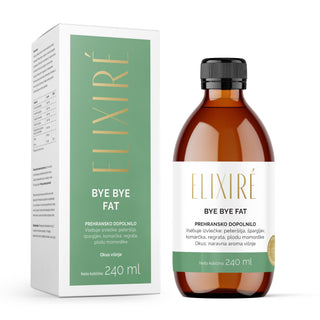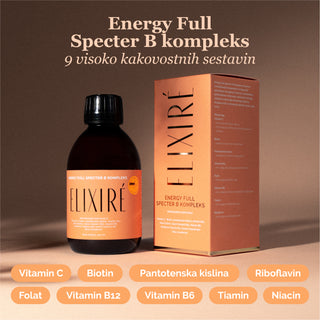Folic acid, also known as vitamin B9, is a water-soluble vitamin that plays a key role in DNA synthesis, cell division, and fetal development in early pregnancy. Since the body cannot produce it on its own, it is essential to get it through food or supplements. It is especially important for pregnant women, women planning to become pregnant, and anyone who wants to support healthy cell growth, skin, hair, and the immune system.
The role of folic acid in cell division and fetal development
Folic acid contributes to the normal synthesis of amino acids, blood formation and plays a key role in the process of cell division. In pregnant women, it helps reduce the risk of neural tube defects in the fetus, so its intake is crucial in the first weeks of pregnancy. (1*)
The European Food Safety Authority (EFSA) has approved the following claims for folic acid: (2*)
-
Contributes to the growth of maternal tissue during pregnancy
-
Plays a role in cell division
-
Contributes to normal psychological function
-
Contributes to reducing fatigue and exhaustion
Who is recommended to take additional folic acid?
Additional folic acid intake is recommended for:
-
Women who are planning a pregnancy or are in the first trimester,
-
Pregnant and breastfeeding mothers,
-
People with impaired nutrient intake (unhealthy diet, alcoholism),
-
People with increased metabolism (stress, physical activity),
-
Elderly people and smokers, where absorption may be reduced.
The recommended daily intake for adults is 200 µg, while for pregnant women the recommended value is 400–600 µg daily. (3*)
Signs of folic acid deficiency in everyday life
Folic acid deficiency can manifest itself in the form of:
-
Fatigue and lack of energy, (4*)
-
Anemia (megaloblastic anemia), (5*)
-
Irritability, (5*)
-
Slow healing of wounds, (4*)
-
Difficulty concentrating. (4*)
During pregnancy, deficiency can lead to serious complications in fetal development.
Food vs. supplements – how to achieve recommended values
Folate (the natural form of vitamin B9) is found in foods such as leafy greens (spinach, Swiss chard), legumes, whole grains, liver, and citrus fruits. However, cooking destroys up to 50% of folic acid, so relying solely on diet is often insufficient.
Dietary supplements with folic acid or the active form – methylfolate – provide a more stable and reliable intake, especially for women with genetic variations (MTHFR polymorphism) that are less able to convert folic acid to the active form. (6*)
Elixiré Hair Fusion and B-complex – thoughtfully designed support
Elixiré Hair Fusion contains a combination of folic acid, biotin, zinc and other key nutrients to support healthy hair, skin and nails. B-complex offers a liquid form of all eight B vitamins, including folic acid, which allows for rapid absorption and effective action - ideal for daily support for women at all stages of life.
Check out Hair Fusion capsules - Hair Fusion capsules for hair, skin and nails
Check out B-complex → Elixiré B Complex | Liposomal Energy Full-Spectrum with all B vitamins
Literature: (*)
- Source: Prevention of the first occurrence of neural-tube defects by periconceptional vitamin supplementation, (AE Czeizel, I. Dudás), https://pubmed.ncbi.nlm.nih.gov/1307234/
- Source: Scientific Opinion on the substantiation of health claims related to folate and contribution to normal psychological functions (ID 81, 85, 86, 88), maintenance of normal vision (ID 83, 87), reduction of tiredness and fatigue (ID 84), cell division (ID 195, 2881) and contribution to normal amino acid synthesis (ID 195, 2881) pursuant to Article 13(1) of Regulation (EC) No 1924/2006, (EFSA), https://www.efsa.europa.eu/en/efsajournal/pub/1760
- Source: Folic Acid Supplementation and Pregnancy: More Than Just Neural Tube Defect Prevention, (JA Greenberg, SJ Bell, Y. Guan, YH Yu), https://pmc.ncbi.nlm.nih.gov/articles/PMC3218540/
- Source: Folate, (NIH, Fact Sheet for Health Professionals), https://ods.od.nih.gov/factsheets/Folate-HealthProfessional/
- Source: Biomarkers of Nutrition for Development-Folate Review, (LB Bailey, PJ Stover, H. McNulty, MF Fenech, JF Gregory, JL Mills, CM Pfeiffer, Z. Fazili, M. Zhang, PM Ueland, AM Molloy, MA Caudill, B. Shane, RJ Berry, RL Bailey, DB Hausman, R. Raghavan, DJ Raiten), https://pubmed.ncbi.nlm.nih.gov/26451605/
-
The extremely slow and variable activity of dihydrofolate reductase in human liver and its implications for high folic acid intake, (S.W. Bailey, J.E. Ayling), https://pubmed.ncbi.nlm.nih.gov/19706381/








